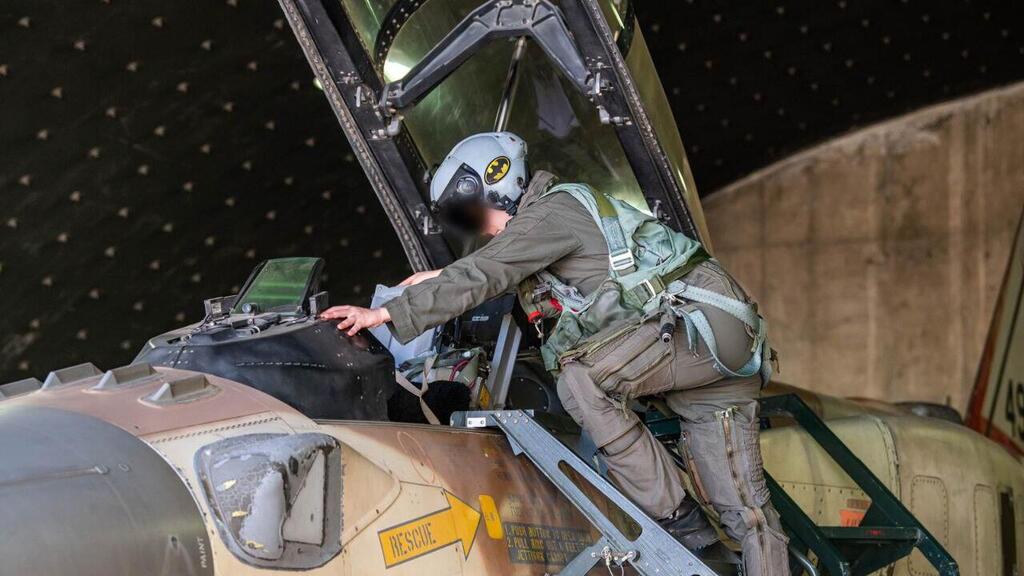Getting your Trinity Audio player ready...
Israel's effective use of air-launched ballistic missiles in its airstrikes against Iran is expected to pique interest elsewhere in acquiring the weapons, which most major powers have avoided in favor of cruise missiles and glide bombs.
The Israel Defense Forces said its Oct. 26 raid knocked out Iranian missile factories and air defenses in three waves of strikes. Researchers said that based on satellite imagery, targets included buildings once used in Iran's nuclear program.
Tehran defends such targets with "a huge variety" of anti-aircraft systems, said Justin Bronk, an airpower and technology expert at London's Royal United Services Institute.
Cruise missiles are easier targets for dense, integrated air defenses than ballistic missiles are. But ballistic missiles are often fired from known launch points, and most cannot change course in flight.
Experts say high-speed, highly accurate air-launched ballistic missiles, such as Elbit Systems' Rampage, get around problems facing ground-based ballistic missiles and air-launched cruise missiles - weapons that use small wings to fly great distances and maintain altitude.
"The main advantage of an ALBM over an ALCM is speed to penetrate defenses," said Jeffrey Lewis, director of the East Asia Nonproliferation Program at the James Martin Center for Nonproliferation Studies at the Middlebury Institute of International Studies in California. "The downside - accuracy - looks to have been largely solved."
Ground-launched ballistic missiles - which Iran used to attack Israel twice this year, and which both Ukraine and Russia have used since Russia's invasion in 2022 - are common in the arsenals of many countries. So, too, are cruise missiles.
Because ALBMs are carried by aircraft, their launch points are flexible, helping strike planners.
"The advantage is that being air-launched, they can come from any direction, complicating the task of defending against them," said Uzi Rubin, a senior researcher at the Jerusalem Institute for Strategy and Security, one of the architects of Israel's missile defenses.
The weapons are not invulnerable to air defenses. In Ukraine, Lockheed Martin's Patriot PAC-3 missiles have repeatedly intercepted Russia's Khinzhals.
Many countries, including the United States and Britain, experimented with ALBMs during the Cold War. Only Israel, Russia and China are known to field the weapons now.
Air Force prepare for strike on IRan
(IDF)
The U.S. tested a hypersonic ALBM, the Lockheed Martin AGM-183, but it received no funding for the 2025 fiscal year. Because it has a large arsenal of cruise missiles and other types of long-range strike weapons, Washington has otherwise shown little interest in ALBMs.
A U.S. Air Force official, speaking on condition of anonymity, said ALBMs are not used in Air Force operations.
Raytheon's SM-6, an air-defense missile that has been repurposed for air-to-air and surface-to-surface missions, also has been tested as an air-launched anti-ship weapon, said a senior U.S. defense technical analyst, who declined to be identified because the matter is sensitive.
In tests the missile was able to strike a small target on land representing the center of mass of a destroyer, the analyst said. Publicly, the SM-6 is not meant for air-to-ground strikes.
Because ALBMs are essentially a combination of guidance, warheads and rocket motors, many countries that have precision weapons already have the capability to pursue them, a defense industry executive said on condition of anonymity because of the sensitivity of the matter.
"This is a clever way of taking a common set of technologies and components and turning it into a very interesting new weapon that gives them far more capability, and therefore options, at a reasonable price," the executive said.
Get the Ynetnews app on your smartphone:







